The Image Between Reality and Artifice
by Carlo Borloni
There he learned that every image is a manipulation, a partial truth, an inevitable artifice. The transition to AI was not a rupture but an emancipation: if photography was already staged, artificial intelligence dissolves the limits of production, turning the impossible into a matter of imagination. At the core of his practice lies the essential question: what does it mean today for an image to be “real”?

News, NUKE
Universal Themes: Memory, Loss, the Human Condition
Nuke’s work is deeply rooted in themes that strike universal chords: memory, loss, existential fragility. These are not abstract ideas, but personal obsessions, fears that resonate collectively. The influences of Barthes and Lynch provide him with conceptual and poetic tools: from the punctum of Camera Lucida, that piercing detail anchoring memory, to Lynch’s insistence on leaving room for the viewer’s own interpretation, Nuke’s work becomes an open field, capable of hosting multiple readings without imposing a single canon of meaning.

Hunger, NUKE
The Invisible Thread of Truth
Though each of Nuke’s series unfolds as a self-contained universe, they are tied together by an invisible thread: the pursuit of truth. Not factual truth, but the perception of reality itself, mediated through images drawn from latent space. HELIUM explored the fragility of youth and group identity, BAPTISM narrated an imaginary war through the lens of photojournalism, VOYEUR staged human vulnerability in cinematic stills detached from any film. With STRESS, Nuke confronts an enemy that cannot be seen but that all of us feel: contemporary anxiety.

Tension, NUKE
Stress as Evolutionary Short-Circuit
At the heart of STRESS lies an evolutionary paradox: the body reacts as if chased by a predator, even when no threat exists. Emails, notifications, deadlines, endless feeds become alarms that never shut off. Nuke translates this condition into video loops that embody the circularity of anxiety: images without beginning or end, suspended in claustrophobic time. The juxtaposition of humans and animals amplifies this tension: pure instinct against the weight of thought. The lion remains still, at peace; the human unravels.

Production, NUKE
An Aesthetic of Subtraction
Minimalism, natural light, white space: the aesthetic of STRESS strips away noise to force attention on the essential. Toscani’s advertising campaigns and Avedon’s stark portraits echo here: frontal, inescapable, isolating the figure until it becomes a symbol. Apparent simplicity turns into a critical device, leaving the viewer no possibility of distraction.

Exertion, NUKE
Stress as Shared Condition
Nuke’s work does not aim to deliver solutions. Instead, it opens pressing questions: what does it mean to feel overwhelmed in a world of abundance? How can we fight a threat that exists only in the mind? And above all: if the predator is calm, why aren’t we? Art becomes a form of self-therapy, translating personal anxieties into images that resonate collectively. Irony and tragedy coexist, mirroring the contradictions of life itself.

Routine, NUKE
An Invitation to Awareness
STRESS is neither denunciation nor cure, but a mirror. Each loop becomes a microcosm where the viewer can recognize their own fears, obsessive thoughts, or even laugh at the absurdity of this invisible prison. It reminds us that the “truth” of the image no longer lies in the illusion of authenticity, but in its ability to catalyze both intimate and universal experience.
Sign up for our newsletter to keep up with the latest news from NINFA
Sign up for our newsletter to keep up with the latest news from NINFA
Write us at: info@ninfa.io, or click here if you need support
Copyright © 2026 Ninfa Labs - 12094240962 - All rights reserved

